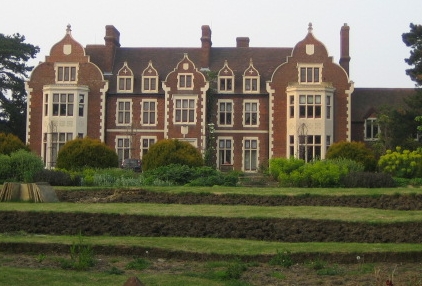|
Calvert Railway Station
Calvert was a railway station at Calvert, Buckinghamshire on the former Great Central Main Line between Manchester Piccadilly and London Marylebone. The station was opened in 1899 and closed to passengers in 1963 and goods in 1964. History Calvert was the last station on the Great Central's London Extension before it reached the Metropolitan's station at Quainton Road away. The station and line between Brackley and Quainton Junction were constructed by Walter Scott and Company of Newcastle upon Tyne. Although the station was named Calvert, no such place existed at the time and the name was that of the local landowner, Sir Harry Verney, who had been born a Calvert but changed his name upon succeeding to the Verney Baronetcy. At the time, Calvert was a very rural settlement with the few houses making up the village being situated close to the station and nearby brickworks, which was the largest employer in the area. In Great Central style, the station had a single island ... [...More Info...] [...Related Items...] OR: [Wikipedia] [Google] [Baidu] |
Calvert, Buckinghamshire
Calvert is a village in Buckinghamshire, England, near the village of Steeple Claydon. Originally named after a wealthy local family who had inherited property at Claydon House, Middle Claydon, on condition that they changed their surname to Verney, the village was founded as a hamlet in the Victorian era to house workers for the brick works that were constructed in the area. The Calvert Brickworks was opened in 1900 by Arthur Werner Itter, a brickmaker from the Peterborough area, but have since been closed in 1991 and turned into a nature reserve ( Calvert Jubilee) and landfill. All that remains of the hamlet is a small group of red brick terrace houses. At the start of the 21st century a new housing estate was built called Calvert Green, greatly enlarging the original village. In 2007 Calvert Green was detached from Charndon and formed into a new civil parish. At the 2011 Census the population of the village was still included in the civil parish of Charndon. Former clayp ... [...More Info...] [...Related Items...] OR: [Wikipedia] [Google] [Baidu] |
Grendon Underwood
Grendon Underwood is a village and civil parish in west Buckinghamshire, England, near the border with Oxfordshire. The village sits between Woodham and Edgcott, near the Roman road Akeman Street (now part of the A41), and around north-west of Aylesbury. At the 2011 Census, the population of the civil parish was 1,625. History The toponym is derived from the Old English for 'green hill near a wood', though the 'Underwood' part of the name was only added in the medieval period to differentiate the village from nearby Long Crendon and to signify the village's position close to the Bernwood Forest. The Domesday Book of 1086 records the village as ''Grennedone''. The manor of Grendon anciently belonged to the St Amand family. Almeric de St Amand of this family was one of the godfathers of King Edward I, who was baptised in 1239. In 1642, Grendon Underwood lay on the forest tracks used by gypsies and strolling players (travelling performers) and was visited more than once by ... [...More Info...] [...Related Items...] OR: [Wikipedia] [Google] [Baidu] |
Railway Stations In Great Britain Opened In 1899
Rail transport (also known as train transport) is a means of transport that transfers passengers and goods on wheeled vehicles running on rails, which are incorporated in tracks. In contrast to road transport, where the vehicles run on a prepared flat surface, rail vehicles (rolling stock) are directionally guided by the tracks on which they run. Tracks usually consist of steel rails, installed on sleepers (ties) set in ballast, on which the rolling stock, usually fitted with metal wheels, moves. Other variations are also possible, such as "slab track", in which the rails are fastened to a concrete foundation resting on a prepared subsurface. Rolling stock in a rail transport system generally encounters lower frictional resistance than rubber-tyred road vehicles, so passenger and freight cars (carriages and wagons) can be coupled into longer trains. The operation is carried out by a railway company, providing transport between train stations or freight customer facil ... [...More Info...] [...Related Items...] OR: [Wikipedia] [Google] [Baidu] |
